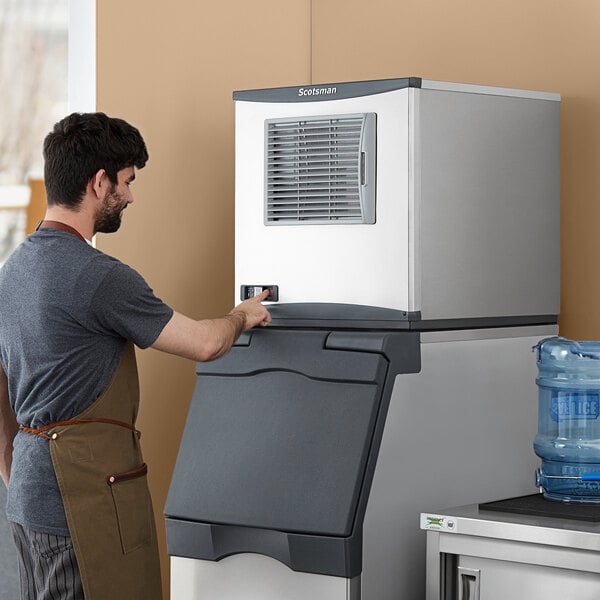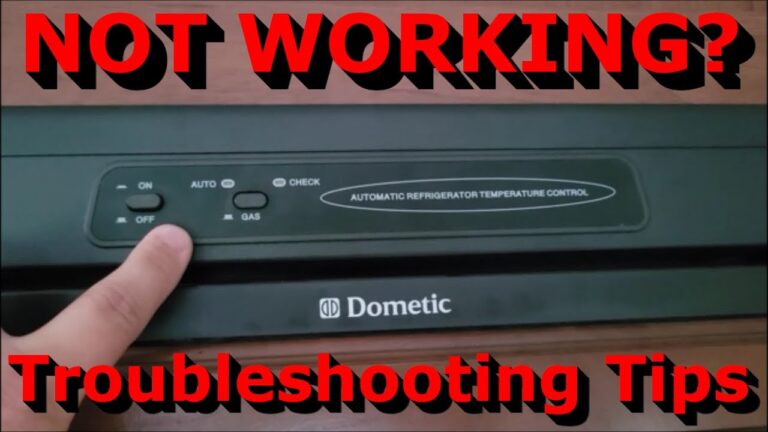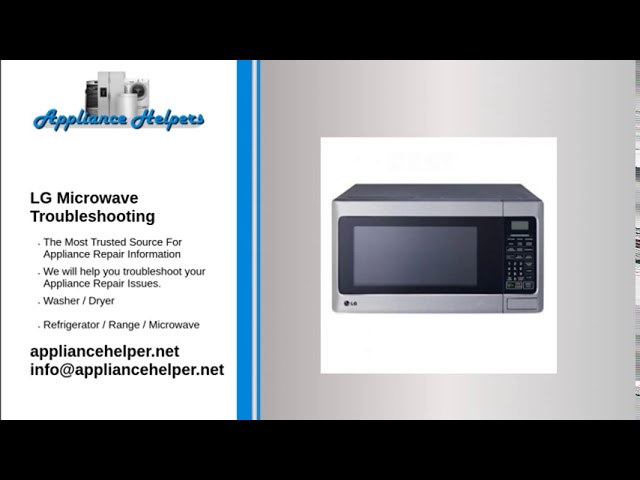Scotsman Ice Maker Troubleshooting: Quick Fixes Guide
Are you facing issues with your Scotsman ice maker? You’re not alone.
Whether it’s for your home or business, a malfunctioning ice maker can be a major inconvenience. Imagine having guests over or running a bustling restaurant, and suddenly, there’s no ice. Frustrating, right? But don’t worry; solving these problems may be easier than you think.
In this guide, you’ll discover simple and effective troubleshooting tips that can get your Scotsman ice maker back to its peak performance. With the right insights, you can save time, money, and perhaps a little sanity. So, ready to dive in and ensure your ice maker works perfectly? Let’s get started!
Common Issues
Scotsman ice makers are popular for their reliability and efficiency. But, like any machine, they face issues. Understanding these problems helps maintain your ice maker’s performance. This section covers some common issues. Learn how to troubleshoot them effectively.
Ice Maker Not Working
An ice maker not working is frustrating. First, check the power supply. Ensure the machine is plugged in. Next, examine the power switch. It should be in the “on” position. Inspect the circuit breaker for any trips. A reset might solve the issue. If still not working, check the water supply. Ensure the water line is connected. Low water pressure can also cause problems. Consult a professional if the problem persists.
Poor Ice Quality
Poor ice quality affects drink taste. Cleanliness is crucial. Regular cleaning prevents mineral build-up. Use Scotsman cleaning solutions for best results. Check the water filter. Replace it if dirty or clogged. Improper water temperature impacts ice quality. Ensure water temperature is between 45°F and 90°F. Finally, check the evaporator plate. A dirty plate affects ice formation. Regular maintenance ensures high-quality ice.
Leaking Water
Water leaks are a common issue. First, inspect the water line. Look for cracks or loose connections. Tighten or replace as needed. Check the drain line next. Blockages cause water to back up. Clean the drain line regularly. Examine the water reservoir for overflows. Adjust the water level if necessary. If leaks persist, inspect the pump for damage. Professional help may be required for complex issues.
Basic Checks
Scotsman ice makers are popular for their reliability and efficiency. Yet, they may encounter issues over time. Performing basic checks can help resolve many common problems. Before calling for professional help, consider some simple troubleshooting steps. These checks can save time and money.
Power Supply
Ensure the power cord is properly connected to an outlet. Check if the outlet is working by plugging in another device. If the ice maker has a power switch, make sure it is turned on. Inspect the circuit breaker for any tripped switches. Reset it if necessary.
Water Connection
Check if the water supply valve is open. Ensure the water line is connected securely to the ice maker. Examine the water line for any kinks or blockages. A restricted water flow can prevent ice production. Ensure there is adequate water pressure.
Filter Status
Inspect the ice maker’s water filter for any signs of clogging. A clogged filter can affect water flow and ice quality. Replace the filter if it appears dirty or old. Regular filter maintenance ensures optimal ice production. Follow manufacturer guidelines for filter replacement intervals.
Temperature Problems
Scotsman ice makers are reliable. But they can face temperature problems. These issues often affect ice production. Understanding these problems helps solve them quickly. Temperature fluctuations can disrupt the ice-making process. Let’s explore common temperature-related challenges.
Ambient Temperature
Ambient temperature impacts ice maker efficiency. High room temperature can slow ice production. Scotsman ice makers work best in cooler environments. Keep the machine away from heat sources. Ensure proper ventilation for better performance.
Thermostat Settings
Incorrect thermostat settings lead to temperature issues. The thermostat controls the machine’s cooling cycle. Check if the settings match the recommended levels. Adjusting them can optimize ice production. Regular checks prevent potential problems.
Mechanical Failures
Mechanical failures in Scotsman ice makers can disrupt your daily operations. These issues are common and may require attention to detail. Understanding the causes can help in addressing them efficiently. Broken components and motor malfunctions are key areas to focus on.
Broken Components
Broken components can halt the ice-making process. Inspect the ice maker for damaged parts. Check for loose screws and disconnected wires. These can affect the machine’s performance. Replace any broken parts immediately to restore functionality. Regular maintenance can prevent these issues.
Motor Malfunctions
The motor is crucial for ice production. A malfunctioning motor can stop the machine. Listen for unusual noises. They can indicate motor issues. Check if the motor is overheating. This can be a sign of malfunction. Professional repair might be necessary to fix motor problems. Keeping the motor clean can extend its life.
Cleaning And Maintenance
Troubleshooting a Scotsman ice maker ensures efficient operation and longevity. Regular cleaning prevents clogs and maintains ice quality. Addressing common issues like water leaks or temperature fluctuations can improve performance.
Cleaning and maintaining your Scotsman ice maker is crucial for its longevity and efficiency. You wouldn’t want your ice maker to stop working just when you have guests over. Regular cleaning not only ensures the quality of ice produced but also prevents potential issues from arising. Dive into the cleaning process and discover how easy it is to keep your ice maker in top shape.Descaling The Ice Maker
Descaling is an essential step in maintaining your Scotsman ice maker. Over time, minerals from the water can build up inside the machine, affecting its performance. To descale, start by switching off the ice maker and unplugging it. Then, remove any ice and water from the machine. Use a descaler recommended by Scotsman, following the instructions on the bottle. This typically involves mixing the descaler with water and running it through the machine. Once done, rinse thoroughly to remove any residue. Descaling should be done every six months or as needed, depending on the hardness of your water.Regular Cleaning Routine
A regular cleaning routine will keep your ice maker in pristine condition. Aim to clean the ice maker every month to prevent mold and bacteria buildup. Start by wiping down the exterior with a damp cloth and mild detergent. Inside, remove any ice and water, then use a mixture of warm water and vinegar to clean the interior surfaces. Rinse with clean water to ensure no vinegar taste lingers. Pay special attention to the ice bin and the water reservoir, as these are common areas for build-up. Have you ever found a strange taste or smell in your ice? This is often due to neglecting regular cleaning. By sticking to a routine, you ensure fresh-tasting ice every time. Remember, a little effort in maintaining your Scotsman ice maker goes a long way. Do you have any personal cleaning tips or stories you’d like to share? Drop them in the comments!
Credit: www.webstaurantstore.com
Advanced Troubleshooting
Scotsman Ice Maker Troubleshooting involves identifying and fixing common issues like low ice production or strange noises. Regular maintenance checks can help ensure efficient performance. Simple steps like cleaning filters or adjusting settings often solve many problems.
Are you grappling with issues from your Scotsman ice maker? Advanced troubleshooting can help you identify and resolve complex problems without unnecessary stress. This guide provides practical steps for tackling those pesky ice maker issues.Professional Diagnosis
Even with your best efforts, some issues require a professional diagnosis. If your Scotsman ice maker isn’t producing ice, it might be due to a blocked water line. A professional can quickly pinpoint the problem, ensuring a thorough check of the machine’s internal components. Faulty sensors can also cause your ice maker to malfunction. A trained technician can test these sensors, saving you time and frustration. It’s a good idea to have a professional service your machine annually to prevent unexpected breakdowns.When To Call A Technician
You might wonder when it’s time to call in a technician. If you’ve checked the basics—like water supply and settings—and the problem persists, it’s time to call for help. Strange noises or leaks are also strong indicators that professional assistance is needed. Another scenario is if the ice quality is poor or the machine is freezing over. These issues can point to more significant problems that require expert attention. Don’t wait until the machine stops entirely; early intervention can prevent costly repairs. Have you ever tried to fix a machine, only to make it worse? This is a common pitfall, and calling a technician can prevent such mishaps. Remember, there’s no shame in reaching out for help when your expertise hits a wall.Preventive Measures
Regular maintenance prevents Scotsman Ice Maker issues. Keep filters clean and check water lines to avoid clogs. Address minor problems early to ensure optimal performance and longevity.
Maintaining your Scotsman ice maker doesn’t have to be daunting. By adopting a few preventive measures, you can keep your machine running smoothly for years. A little attention now can save you time and money down the line. Plus, a well-maintained machine ensures you always have a fresh supply of ice when you need it. Let’s dive into some practical tips to safeguard your ice maker.Regular Maintenance Tips
Regular maintenance is key to extending the life of your Scotsman ice maker. Start by scheduling a routine cleaning every six months. Use a mixture of water and vinegar to clean the interior, ensuring you remove any mineral buildup. Check the water filter and replace it if necessary. A clogged filter can affect the quality and quantity of ice produced. Remember to inspect the condenser coil, too, as dust accumulation can reduce efficiency. Pay attention to the machine’s performance. If you notice unusual noises or a decrease in ice production, it might be time for a more thorough inspection or professional service. Consistent checks prevent small issues from becoming costly repairs.Avoiding Common Mistakes
Avoiding common mistakes is crucial for the longevity of your ice maker. Never use harsh chemicals to clean the unit; they can damage the internal components. Stick to mild solutions recommended by the manufacturer. Be mindful of the machine’s location. Ensure there’s enough ventilation around the unit to prevent overheating. Overcrowding the space can lead to operational issues. Keep an eye on the water supply. Hard water can lead to mineral deposits, affecting ice quality and machine efficiency. Consider installing a water softener if your area has hard water. Have you ever overlooked a simple maintenance task, only to face a bigger problem later? That’s a scenario you want to avoid. By staying proactive with these preventive measures, you can ensure your Scotsman ice maker remains in top condition, providing you with quality ice every time.
Credit: www.youtube.com
Credit: www.scotsman-ice.com
Frequently Asked Questions
Why Is My Scotsman Ice Maker Not Making Ice?
Your ice maker might not be making ice due to a clogged water filter or low water pressure. Check these first.
How Do I Reset My Scotsman Ice Maker?
To reset, turn off the machine, wait a few minutes, and then turn it back on. Simple reset.
What Does The Cleaning Light Mean On Scotsman Ice Maker?
The cleaning light indicates that it’s time to clean your ice maker. Follow the cleaning instructions in the manual.
Why Is My Ice Maker Making Small Ice Cubes?
Small cubes often result from low water pressure. Ensure proper water flow to fix this issue.
How Often Should I Clean My Scotsman Ice Maker?
Clean your ice maker every six months. This ensures optimal performance and hygiene.
Conclusion
Troubleshooting your Scotsman ice maker can save time and money. Simple checks often fix common issues. Clean regularly to prevent malfunctions. Check water supply for constant flow. Inspect the filter for clogs. Ensure the power is stable and connections secure.
Follow these steps to keep your ice maker running smoothly. Proper care extends the lifespan of your machine. Regular maintenance prevents unexpected breakdowns. Stay informed on basic repairs. Enjoy uninterrupted ice supply with these tips. Remember, a little effort can make a big difference.
Keep your Scotsman ice maker in top condition effortlessly.






